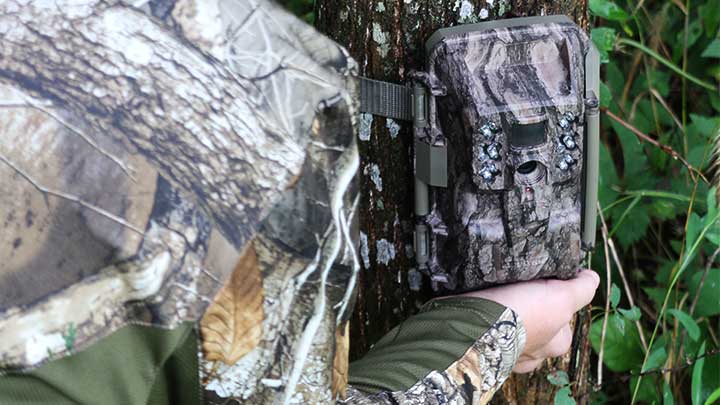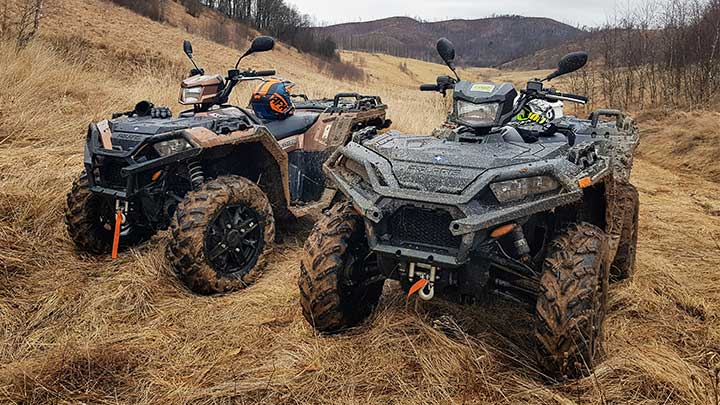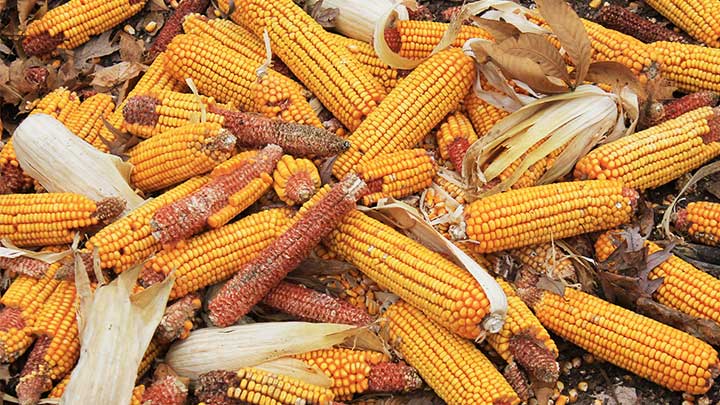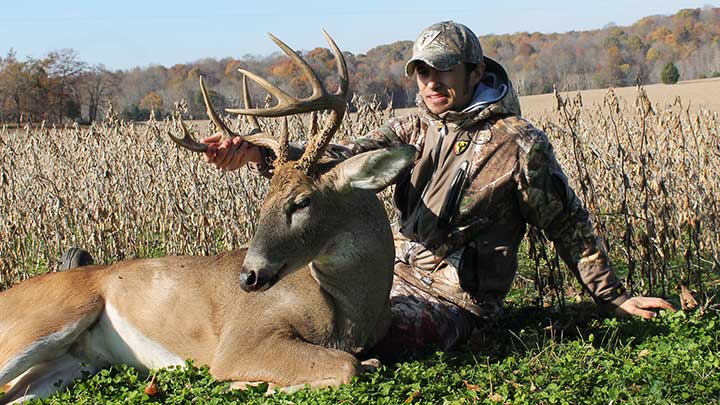
In the past few decades, an entire industry has developed around deer hunting, and much of it centers on big-deer success. An untold number of deer hunters have attempted to turn big buck hunting into a science, but it’s more of an artform with a dash of chance and randomness. While that shouldn’t stop us from strategizing, there are no absolutes in deer hunting. Still, these 20 tips are universal truths.
1. Hunting Way More Than You Scout
If I had seven days to hunt a new property, I’d spend at least the first two to three scouting. If I didn’t find something I liked, I’d spend up to four days looking for hot sign. If I haven’t found a great spot at the end of day No. 4, I’ll take the best I’ve located and start hunting the morning of day No. 5, and hunt that location morning and evening the remainder of the trip.

2. Not Putting Stock in Historical Patterns
Not all deer carry over the same land-use habits from season to season, but some do. In the past decade, I’ve captured well over 1,000 unique bucks on trail cameras, and a large percentage of the mature ones do similar things year after year. In a general sense, this allows you to somewhat predict future deer activity.
3. Relying on an Old Pattern When New Information Contradicts It
Similar to general year-over-year activity, deer oftentimes have in-season patterns, too. The pattern might last a few days, or a few weeks, but they’re repetitious. Receiving this information in a real-time manner—whether by in-person sightings or cellular trail cameras—can be extremely valuable. That said, things can change quickly, and if you have updated information that contradicts older intel, it’s usually better to act on the newest.
4. Relying Too Heavily on Trail Cameras
I love these gadgets that take pictures of deer. They’ve truly revolutionized the way we hunt whitetails and other game. That said, I think we put too much emphasis on them. Not hunting because a deer isn’t on a camera, or on it during daylight, can be a bad call. There’s a good chance bucks are still in the area, and cameras are barely missing them. If cameras aren’t productive, conduct a sit or two anyway. You might see deer in the area using slightly different trails or patterns.

5. Hunting the Best Spots Too Soon or Late
At its core, hunting is a game of inches and seconds. But it’s also a game of days, weeks and months. Generally, properties peak at a certain point in the season. Some properties I hunt are best in the early and/or late season. Others are at their prime during the rut. It takes scouting and time hunting these locations to really know, but once that information is logged, don’t forget it. Then, each season, hunt areas based on their historical peak.
6. Hunting Without Focusing on High-Odds Days
Deer are deer, they’re going to move at random times. They’re also crepuscular, meaning they move most at dawn and dusk. However, in my experience, there are certain things that can also trigger better daylight activity, such as cold fronts, warmups after a cold spell, light rain events, high barometric pressure and more. To minimize hunting pressure, hunt when these triggers are in play.
7. Putting Excessive Stock in Funnels and Other Easy Routes
(Most) deer almost always take the path of least resistance. That’s true for does, fawns and young bucks alike. It isn’t always true for mature bucks, though. Oftentimes, they’ll use secondary trails that are smaller and less defined. Keep this in mind when scouting.
8. Driving Four-Wheelers to Treestand Locations
Disabilities aside, hunters targeting older deer should rarely if ever drive a four-wheeler anywhere near a treestand location. Over time, mature bucks pick up on that and learn to avoid such areas when they hear that motor rev up. Of course, deer hunting is rarely black and white, and more often shades of gray. So, there are times when a four-wheeler will have less of an impact. The key distinction is to ask yourself if the four-wheeler would mimic normal day-to-day activity for that area. If so, it might have less of an impact.

9. Failing to Analyze Surrounding Hunting Pressure
Those who know well the properties they hunt—private or public—also have an idea of what’s happening around them. Obviously, they aren’t trespassing, but they are keeping tabs on what is being killed, whether or not certain properties receive more or less hunting pressure, etc. These things and more impact the general area. The best way to monitor happenings on bordering lands is to establish good relationships with the hunters around you. After all, who wants to spend the remainder of deer season hunting a buck that got shot two months prior
10. Repetitively Hunting the Same Spot
It comes with a caveat, but hunting an area over and over is ill-advised. That said, if conditions allow, I do believe in sitting a spot for a few consecutive days. Stand hopping each time afield reduces your odds, but investing three or so days in your best stand location increases your chances of killing a good deer, even if it takes multiple sits for them to show up.
11. Pulling Double Shifts
Want to tag a big one? Start hunting all day. First, deer move at midday, too, especially during the rut. Second, walking in, leaving for lunch, returning, and then leaving after dark leaves behind twice as much ground scent and doubles your chances of getting winded along entry and exit routes. So, when possible, pull dark-to-darks.
12. Hunting Directly Over (Some) Scrapes
I’m rarely a fan of hunting over scrapes, just to be hunting over scrapes. Studies have shown that most scraping activity takes place at night, especially on field edges. Plus, most of them go cold once the bulk of does enter estrus. That said, if there just happens to be a scrape in a great spot, that’s a different story. But don’t hunt over scrapes for the sake of hunting over scrapes without supporting reasons.
13. Hunting from Un-Brushed Ground Blinds
You can get away with hunting from a blind that hasn’t been brushed in. But your odds of killing mature deer go way up if you conceal it with natural cover that matches the surroundings.
14. Always Hunting with the Perfect Wind
It’s important to hunt responsibly. Keeping tabs on the wind, and hunting when it’s in your favor, are best much of the time. However, old deer get that way for numerous reasons, and one of them is savviness. While bucks don’t walk into the wind 100 percent of the time, they do use it to their advantage. Hunting with a just-off wind—that’s just barely good enough for you that scent drifts harmlessly passed the deer—is an excellent tactic.

15. Hunting Over Major Food Sources
Unless in managed, unpressured areas, or in parts of the country where there are thin fingers of bedding cover, it isn’t very common to see mature deer out in major food sources during daylight. Instead, focus on secondary food sources and other staging areas between prime bedding and major feeding destinations. That’s where you’ll see better daylight movement.
16. Being too Reliant on Bait
Some states allow baiting. We’re not here to debate the use of this tactic. However, where it is legal, hunters oftentimes rely on it too much. I’m not saying abandon it altogether, but think of it as one tool in a big bag, not as a one-option playbook.
17. Calling at the Wrong Time
Calling is a great tactic that often goes overlooked. That said, implementing it incorrectly can be equally consequential. To fully understand how to call to deer, one must also completely understand whitetail behavior, body language and situational tactics.
18. Ignoring Your Gut Instincts
Gut instinct is intuition’s little brother, and to them, knowledge and wisdom is momma and daddy. Joking aside, gut feelings are generally rooted in experience. Unless a major realization contradicts these, it’s usually best to listen to them.

19. Waiting for the Perfect Shot Opportunity
If I’ve learned anything while hunting, it’s that whitetails rarely present perfect shot opportunities. So, take the first good one they give you. Don’t mistake that statement as an excuse to take poor shots. Always be smart, respect deer and take only ethical trigger pulls. But never pass up a good shot opportunity in hopes of a great one.
20. Being too Aggressive, and Not Being Aggressive Enough
Many deer have escaped harm because hunters were either too aggressive or too passive. While it’s easy to encourage finding that happy medium, it’s much harder to accomplish. That should never stop us from trying, though. I call it being “patiently aggressive.” Don’t strike until the striking is good, but don’t be afraid to do it once a window of opportunity opens.




































